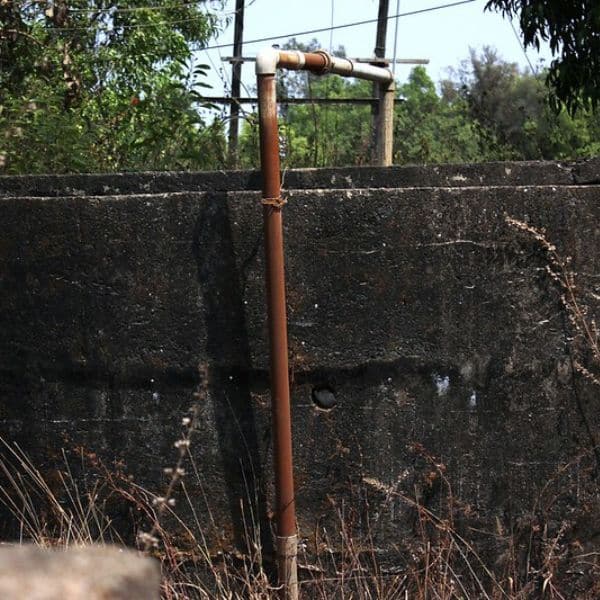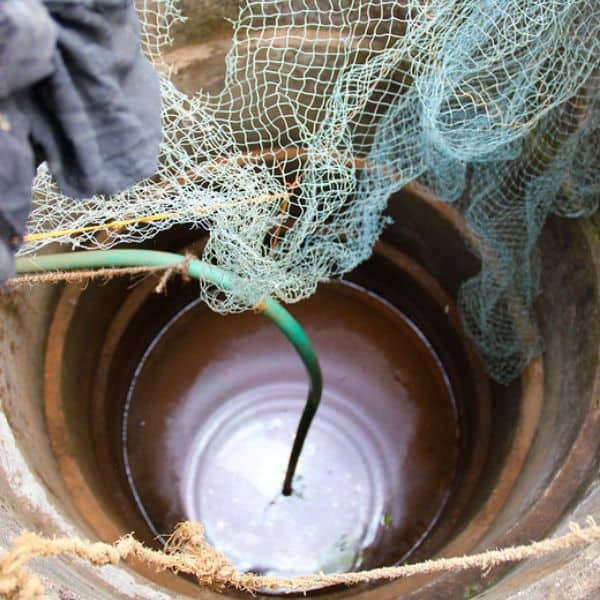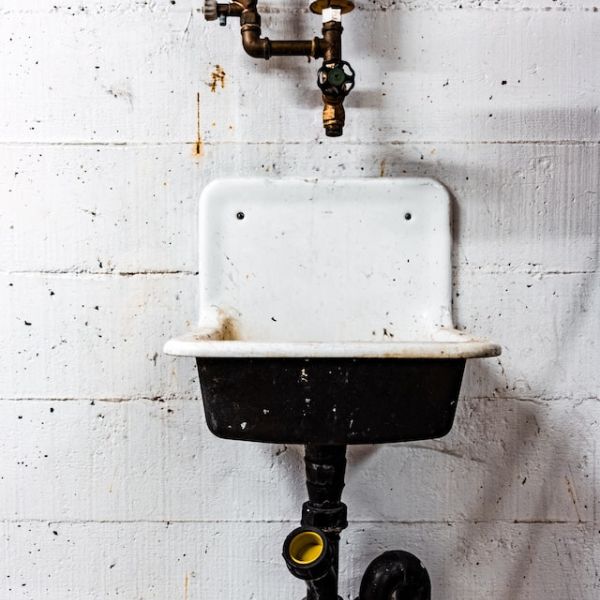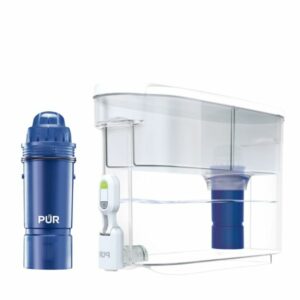How Does Iron Get Into Your Well Water?
Iron is essential for human health, but too much of it in your well water can cause many issues. High iron levels can be a nuisance, from staining your clothes and plumbing fixtures to making your drinking water taste metallic. But how does iron even get into your well water in the first place?
There are several ways that iron can enter well water. The most common way is through natural processes, as groundwater moves through soil and rocks that contain iron minerals. As the water dissolves these minerals, it picks up small amounts of iron, which can accumulate over time. Another way that iron can enter well water is through corrosion in pipes or other metal components in the plumbing system.

What Does Iron Do to Your Hair?
Iron is a common mineral found in tap water. While it is essential for our body’s healthy functioning, excessive iron can harm our normal or colored hair. When iron levels in water are high, it can cause discoloration and damage to your hair (normal hair, dark hair, or blonde hair).
Iron in water can also lead to the buildup of rust scales on your scalp, which can cause itching and flaking. The presence of iron ions in the water supply reduces its natural pH level, making it more alkaline. This change in pH level disrupts the balance of natural oils on our scalp, leading to dryness and frizziness.
Homeowners can use a water softener to soft water or should buy a good-quality iron filter. Apart from that, they should also apply other methods to clean the shower head including apple cider vinegar or lemon juice. They can also use a shower filter attached to a shower head. These practices will keep their hair color safe from iron bacteria that accumulate in the shower head area. Additionally, homeowners with high iron levels in their well water should use clarifying shampoo and then apply deep moisturizing conditioner after the final rinse to avoid hair dry.
Acceptable Iron Levels in Water
Iron is a common mineral found in soil and water. It is one of the most abundant elements on earth. However, when it comes to drinking water, iron levels must be carefully monitored to ensure they fall within acceptable limits. Too much iron in your water can lead to many issues that affect your health and the quality of your plumbing.
The acceptable level of iron in drinking water varies depending on where you live and what type of plumbing system you have. The Environmental Protection Agency (EPA) generally recommends that iron levels not exceed 0.3 milligrams per liter (mg/L) for aesthetic reasons. This means that if your water has more than 0.3 mg/L of iron, it may have an unpleasant taste or odor or cause staining on surfaces like sinks or toilets.

How to Test Your Well Water for Iron?
To test your well water for iron, the first step is to purchase a testing kit from a reputable supplier. These kits are typically available at home improvement stores or online retailers and come with everything you need to collect and analyze your sample. Before you begin the testing for iron water, read the instructions carefully to understand how to collect and prepare your sample properly.
Once you have collected your sample according to the instructions provided with your kit, you will need to analyze it for iron content. This is done by comparing the sample to a chart indicating how much iron is in your water.
Another method to test your well water for iron is by a certified laboratory. By having your well water tested by a certified laboratory, you can get accurate results that will help guide any necessary treatment options.

Other Effects of Iron
Aside from affecting hair, iron water also has some other effects, such as:
Damaged skin
Iron in water can also cause various negative effects on your skin, including dryness, irritation, and premature aging. When iron levels are high in water, it can leave rust-colored stains on sinks and tubs. These same rust particles can also cling to your skin during a shower or bath, leaving it feeling rough and dry.
Metallic taste
The metallic taste occurs due to dissolved iron in the water. When this happens, it oxidizes and forms rust particles that give off a metallic flavor. This can be particularly noticeable when drinking from metal glasses or cups, as they amplify the taste sensation.
Stomach problems
Iron is an essential nutrient necessary for the proper functioning of the human body. However, when there is too much iron in your drinking water, it can cause problems with digestion and absorption of nutrients from your food. Iron overload in the body can also lead to liver damage and an increased risk of developing diabetes.
Stained Laundry and Dishes
The high amount of iron in water can also cause unsightly effects on your laundry and dishes. Iron stains are a common problem in areas with high iron levels in their water supply. These stains usually appear as brown or reddish-orange spots on clothing, towels, and linens.
These rust stains are caused by the reaction between iron particles and oxygen in the air. When water containing iron is used to wash clothes or dishes, these particles can leave behind residue that causes staining over time.
Clogged pipes and plumbing
Iron water can lead to various problems with the plumbing system. When iron accumulates over time, it can build up inside the pipes and form blockages that affect water flow.
Clogged pipes caused by high iron levels are a common problem for homeowners who rely on well water. The buildup of this mineral can cause rust-colored stains in sinks, toilets, and showers. If left untreated for a long time, clogs may become severe enough to cause slow drains or even complete blockages.

How to Remove Iron From Well Water
Fortunately, there are iron filters for well water that homeowners can use to reduce excess mineral deposits.
Ion Exchange
Ion exchange involves a process where ion resins remove unwanted minerals or chemicals from water passing through them. Specialized resin beads with a negative charge attract positively charged iron ions in the well water. As the well water passes through the resin bed, these unwanted ions stick to the resin beads while clean water continues.
The result? Clean and clear-tasting tap water for your home!
Iron Removal System
An iron removal system is a water treatment solution that effectively removes excess minerals from your household water supply. This treatment system ensures that all the water flowing into your home is free from any unwanted contaminants.
There are many types of iron removal systems:
Oxidation-based
One of the most common iron removal systems is oxidation-based. This involves introducing air or oxygen into the water supply to convert dissolved ferrous iron (Fe2+) to ferric iron (Fe3+), which can then be filtered through a physical barrier or chemical process.
Aeration-based
Aeration-based water filtration process uses oxygen to remove iron and manganese from the water supply. The aeration process introduces air into the water supply, which causes the iron to oxidize and form solid particles that can be easily filtered out.
Ozone-based
Ozone-based is an innovative technology that effectively removes iron from water. This system utilizes ozone, one of the most powerful oxidizing agents. When introduced to iron-rich water, ozone reacts with the iron present and converts it into a solid form that can be easily filtered out.
Polyphosphate-based
Polyphosphate-based systems use a special chemical compound that bonds with the iron in the water and prevents it from causing discoloration or staining.
Reverse Osmosis Water System
Reverse Osmosis (RO) water systems are popularly known for their ability to remove iron from water. The RO process forces the contaminated or mineral-filled feedwater through a semi-permeable membrane. Because of its small pore size, the membrane allows only pure water molecules to pass through while filtering out contaminant particles- including iron.
Conclusion
The presence of iron in water affects hair health. Iron binds to proteins in the hair, leading to discoloration, breakage, and damage. Furthermore, a high amount of iron in well water can also damage your skin, causing dryness, irritation, and premature aging. Water filters or other methods should be used to reduce iron levels present in water to prevent these negative effects.

